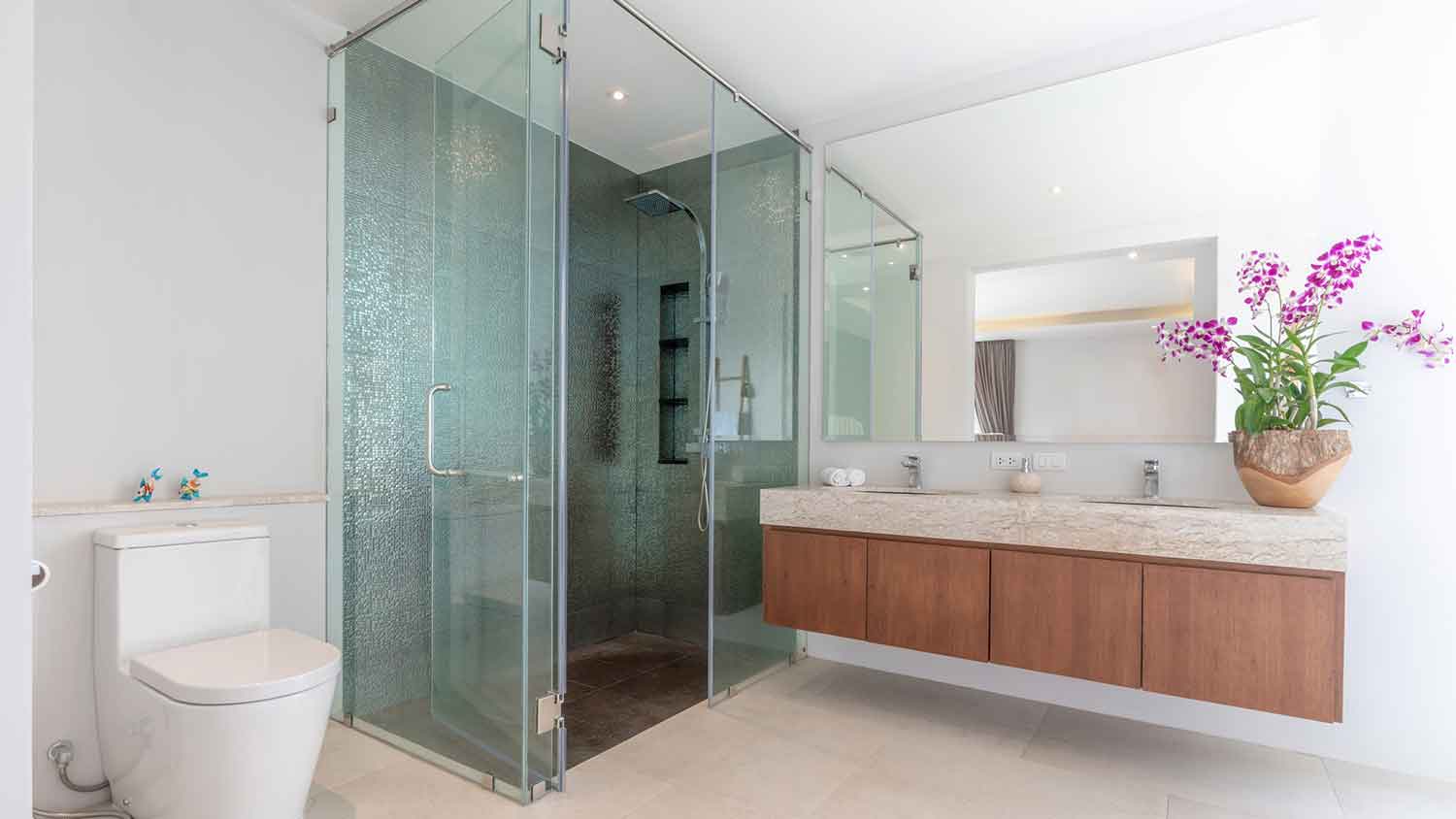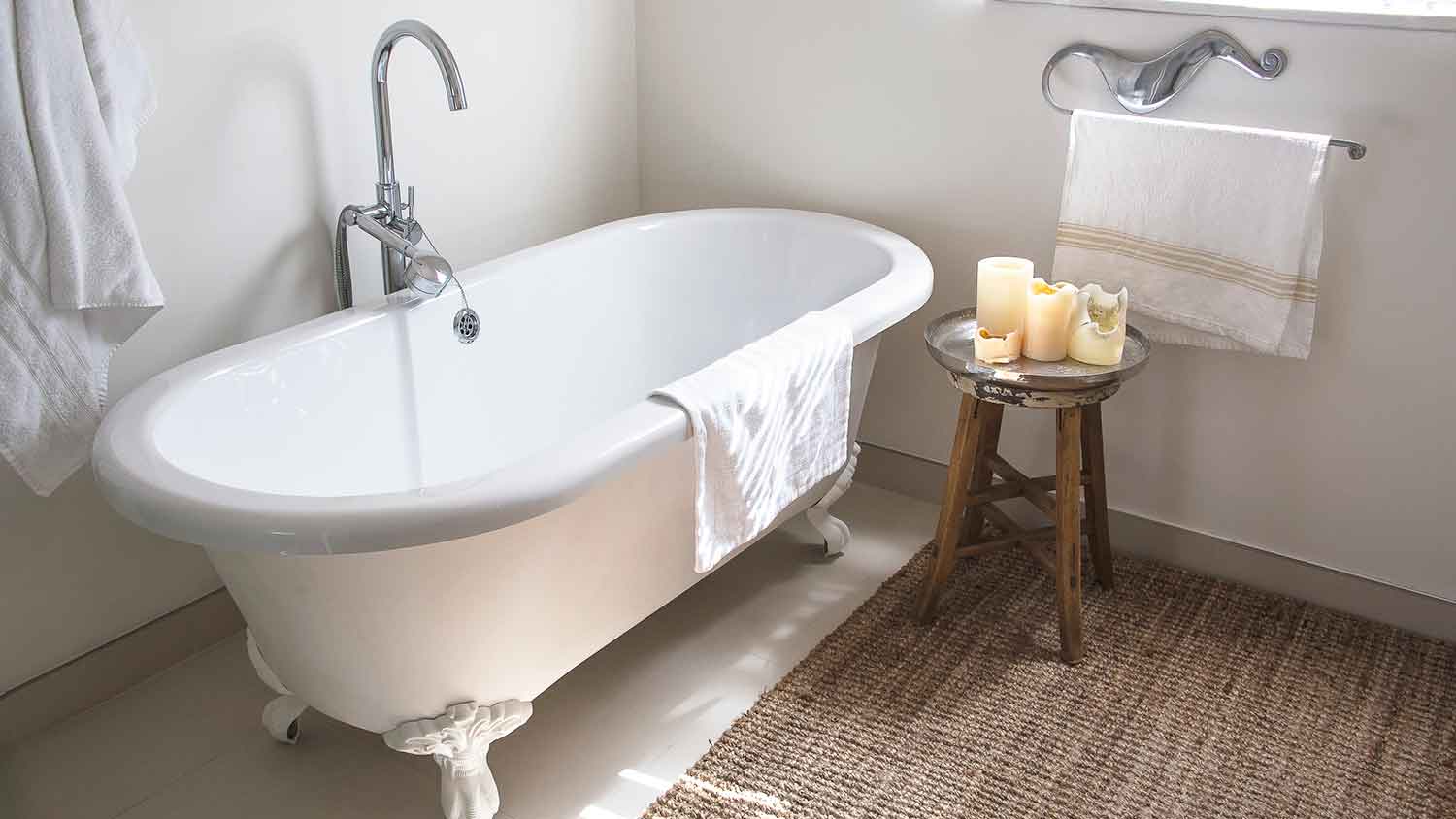
Pedestal sinks are small bathroom wonders, but how much does a pedestal sink installation cost? Learn the cost factors for adding one to your bathroom.
It's a splashy decision—soak in luxury or step into convenience?


Walk-in showers are more accessible and better for small spaces.
Tubs can include showers, offering more versatility.
Walk-in shower and tub costs range widely due to materials and customizations, but the average costs are $9,000 and $5,525, respectively.
Maintenance, durability, and resale value are also deciding factors.
Whether you prefer a perfunctory shower or a blissful bath, the debate about which fixture to install depends heavily on personal preferences and spatial considerations. Homeowners renovating their bathroom or designing a new one can use this guide to weigh the merits and drawbacks of a walk-in shower versus a bathtub for their space.
The differences between walk-in showers and tubs include accessibility, space utilization, and functionality. Walk-in showers are easy to access, benefitting individuals with mobility issues. They also maximize space efficiency, making them ideal for smaller bathrooms. On the other hand, tubs are great for relaxing and providing comfort through soaking. They offer versatility for a variety of activities, such as bathing children and pets.

A walk-in shower seamlessly transitions from the bathroom floor to the shower area, which is convenient for individuals with mobility challenges. Walk-in showers come in various styles and sizes, often featuring sleek glass doors or panels and customizable features such as seating, shelving, and rainfall showerheads.
| Pros | Cons |
|---|---|
| Accessible | Water not as well contained |
| Space efficient | Limited privacy |
| Easy to maintain | Poor temperature regulation |
| Customizable | Higher installation cost |
Best for:
Individuals with mobility issues or bathrooms with limited square footage.
Firstly, they are excellent for accessibility, making them ideal for people with mobility issues, disabilities, or elderly family members who require easy shower access without a step or curb. Secondly, walk-in showers maximize space efficiency, making them a practical alternative to traditional tubs in small or narrow layouts.
Walk-in showers are fully customizable and can incorporate built-in seating, multiple shower heads, and the luxurious aesthetic of your dreams. With fewer nooks and crannies than traditional showers or bathtubs, these showers are low maintenance and easy to clean.
Unlike traditional showers with doors or curtains, walk-in showers are partially or fully open, allowing water to splash onto the bathroom floor during use. This can result in slippery surfaces and mold or mildew if not adequately addressed through ventilation and waterproofing measures.
While some homeowners may appreciate the spaciousness of walk-in designs, others may need more privacy, especially in shared or multi-user bathrooms. The lack of an enclosed space also means heat can escape, and maintaining a comfortable shower temperature may require investing in features such as heated flooring or high-powered shower heads.

Bathtubs come in various materials and styles, including freestanding, alcove, and corner designs, and often feature amenities such as showers or luxurious upgrades, including jets, hydrotherapy, or ergonomic shapes for added comfort.
| Pros | Cons |
|---|---|
| Relaxing experience | Uses more water |
| Offers insulation | Limited accessibility |
| Ideal for kids or pets | Harder to clean |
| Marketability | Structural support required |
Best for:
Homeowners who want a versatile fixture for kids, pets, and relaxing at home.
Tubs provide a luxurious and relaxing bathing experience, offering deep soaking capabilities to help alleviate stress and muscle tension. They are versatile, catering to various bathing preferences, including soaking, bubble baths, and bathing children or pets.
Additionally, tubs can enhance a bathroom's aesthetic appeal, serving as a focal point for design and potentially increasing home value—especially ones with desirable features like jets or a contoured backrest. For small bathrooms, a tub with a built-in shower is space-efficient and convenient.
One concern regarding bathtubs is the amount of space they take up, especially when the fixture doesn’t double as a shower. Tubs are harder to clean, and they use more water than showers. Depending on the tub’s material, the weight of a filled tub can strain your floor structure, requiring reinforcement.
Another point to consider is that household members with mobility issues may find stepping in and out of tubs challenging, if not dangerous.
When comparing walk-in showers to tubs, several factors come into play.
Many homeowners want to base their decision on cost, but walk-in showers and tubs vary wildly depending on materials and customization. The cost to install a walk-in shower averages $9,000, but you may pay as little as $1,200 or up to $20,000. Bathtub replacement costs an average of $5,525, but it ranges from $200 to $14,000. The final cost will come down to the type of bathtub or shower, so contact a local shower installer for an accurate quote.
Aesthetics are a big part of home enjoyment. What works for one homeowner may not be visually appealing to another. Individuals who prefer a sleek, modern look may go for a walk-in shower, while those looking to create a spa environment at home may choose a deep, soaker tub.
Homeowners can tailor the design of a walk-in shower to their preferences with built-in seating, multiple shower heads, and a broad range of stylish tiles. This level of customization allows individuals to optimize the functionality and aesthetics of their shower space according to their specific needs and desires, thereby enhancing the overall enjoyment and satisfaction of their bathing experience.
Converting a tub into a shower can cost between $1,200 and $15,000, depending on your chosen materials and accessories. On the other hand, converting a shower into a tub can cost between $1,200 and $3,000. The actual cost will depend on the type of tub or shower you select, the cost of labor, and any customization you want, such as a walk-in tub feature. Remember that the tub cost does not cover any additional infrastructure support that may be necessary.
Walk-in showers offer superior accessibility compared to tubs, especially for older adults and people with disabilities. This type of shower eliminates the need to step over a high tub wall, reducing fall risks significantly. Many walk-in showers can be designed with additional accessibility features, such as grab bars, built-in seating, and handheld showerheads at various heights to accommodate users with different needs.
Homeowners hoping to stay in their current home through their later years can consider walk-in showers as a practical option to prioritize their safety without sacrificing style.
Showers are easier to maintain because they have fewer spots where dirt, grime, and soap scum can accumulate. Additionally, the smooth, non-porous surfaces commonly found in showers, such as tile, stone, or fiberglass, are resistant to staining and are less prone to mold and mildew growth than those used in tubs, such as porcelain or acrylic.
Showers use less water than a full bathtub, with modern shower heads designed for efficient water delivery while minimizing consumption. Additionally, showers allow for precise control over water usage, as users can adjust flow and temperature to their preference, reducing wastage.
Consider whether converting a tub to a shower is worth it. Bathtubs can add more value to a home than showers due to their perceived luxury and versatility. They also cater to various preferences, including soaking baths, therapeutic hydrotherapy, and the needs of families with children or pets, making them versatile fixtures in a household. Moreover, bathtubs enhance the aesthetic appeal of bathrooms, serving as focal points for design and contributing to a spa-like ambiance that elevates the overall perceived value of the home.
From average costs to expert advice, get all the answers you need to get your job done.

Pedestal sinks are small bathroom wonders, but how much does a pedestal sink installation cost? Learn the cost factors for adding one to your bathroom.

Are you considering converting or adding a loft space to your home? Here's what you need to know about the cost of loft conversion and how to control prices.

Whether you’re looking to hire a pro or DIY, the cost of a kitchen design can add up quickly. Learn the cost factors involved in designing your kitchen.

Building a bump-out addition creates more functional space in your home while also boosting its resale value. Learn more about their costs, benefits, and uses.

Whether you’re renovating or building a new bathtub, learn the standard bathtub sizes and styles to choose from to create a relaxing and functional space.

An updated bathtub can give a bathroom a whole new look. Find out how much it costs to replace a bathtub in Minneapolis, MN, including prices by type and labor costs.